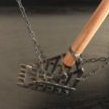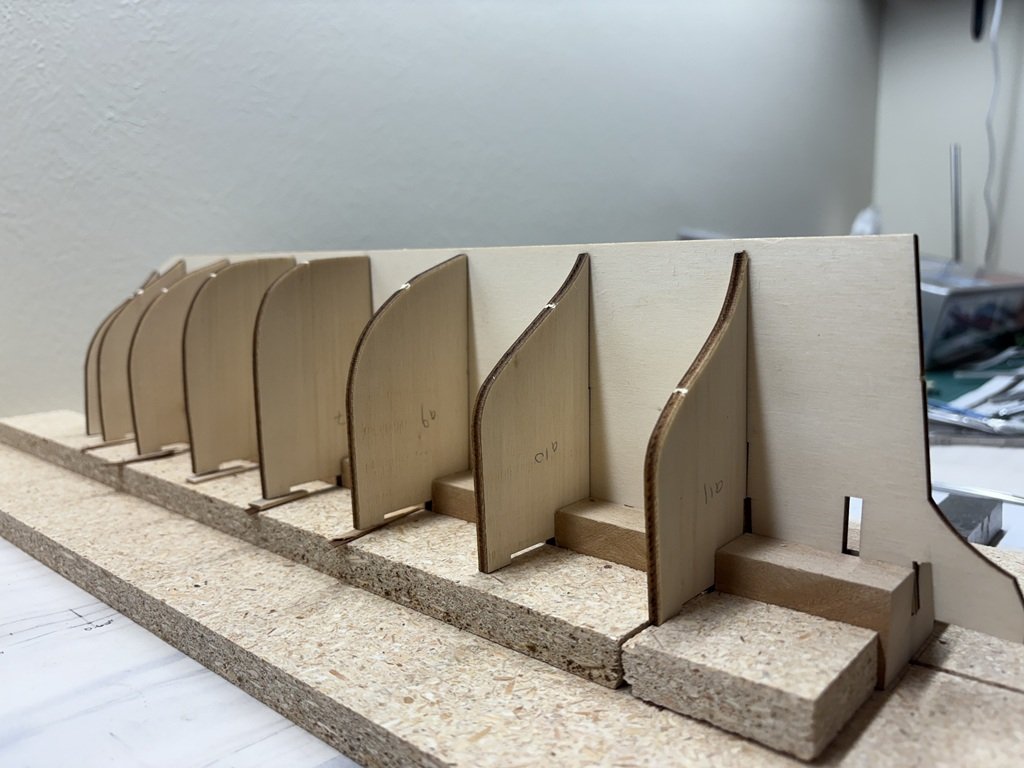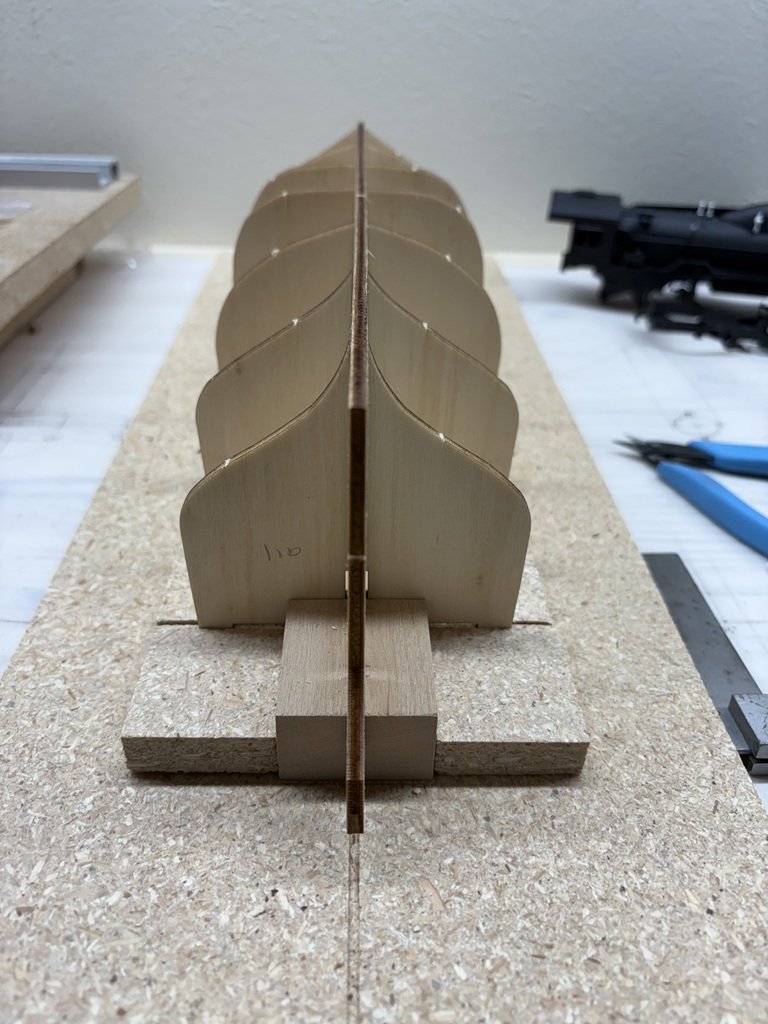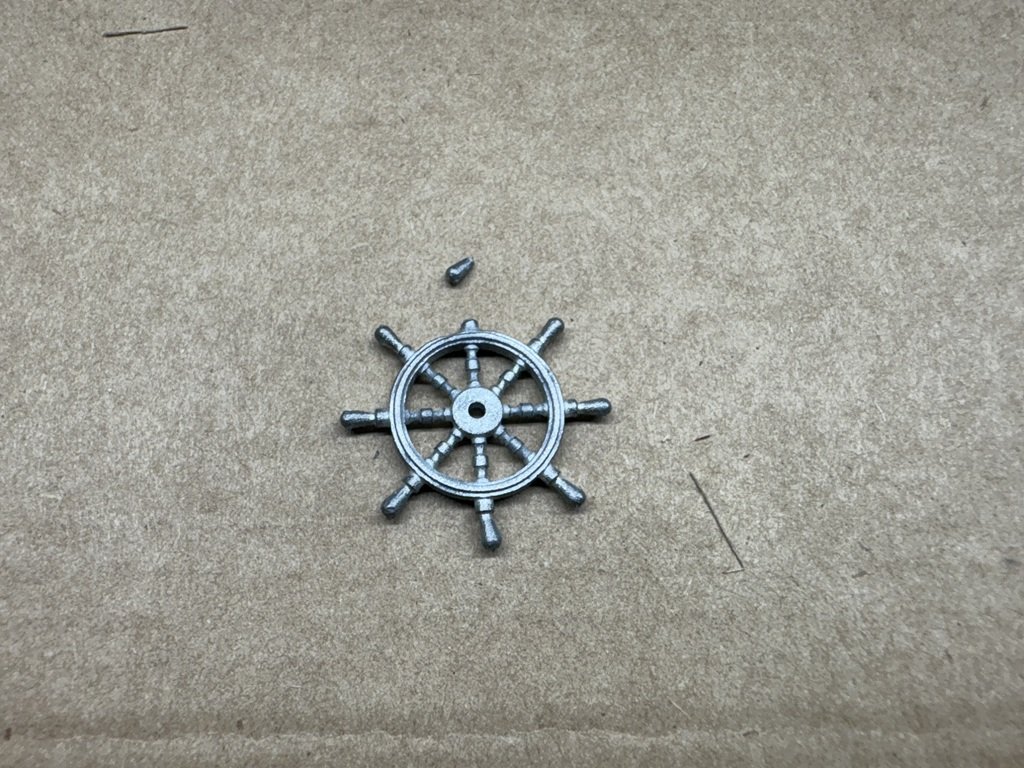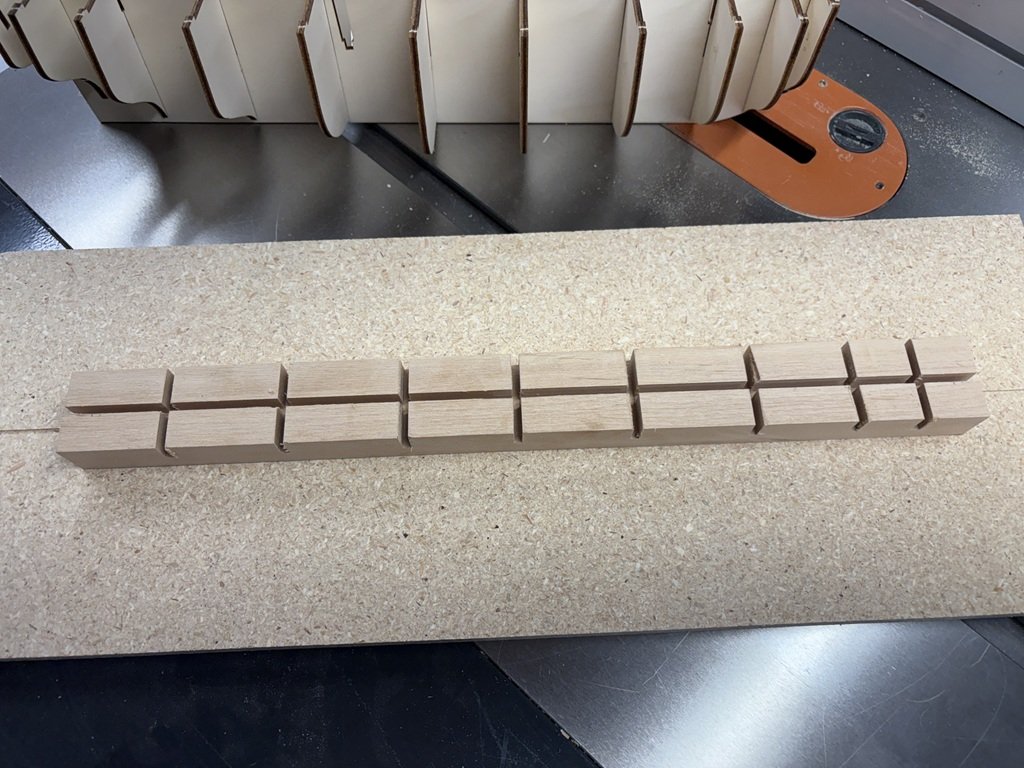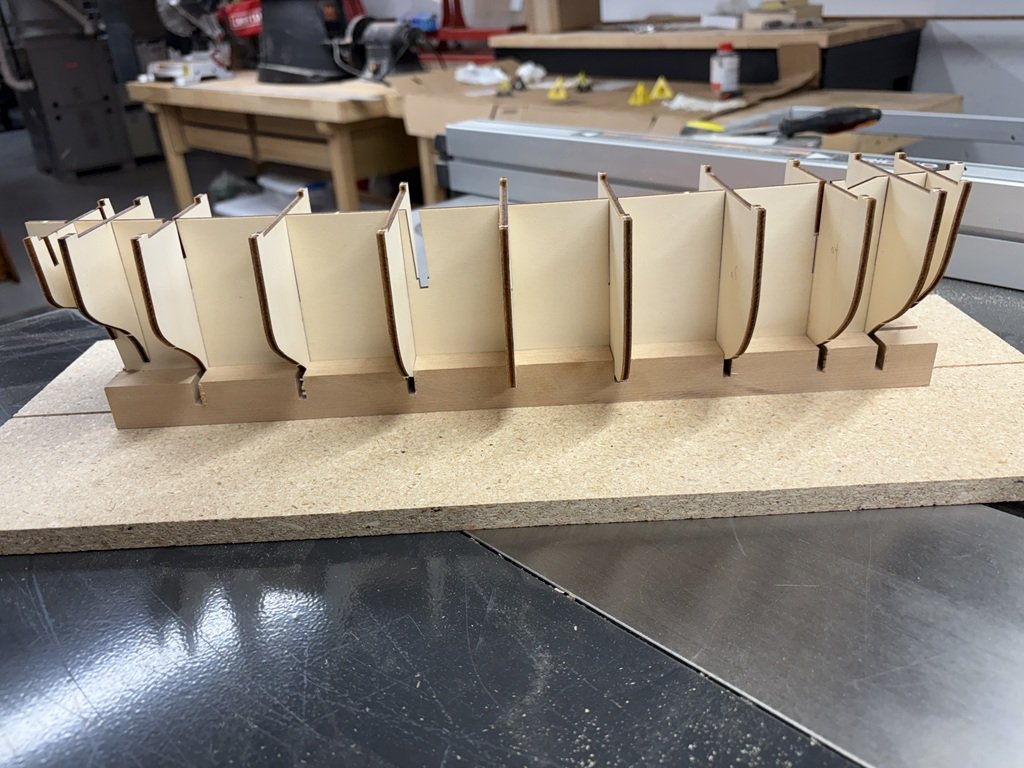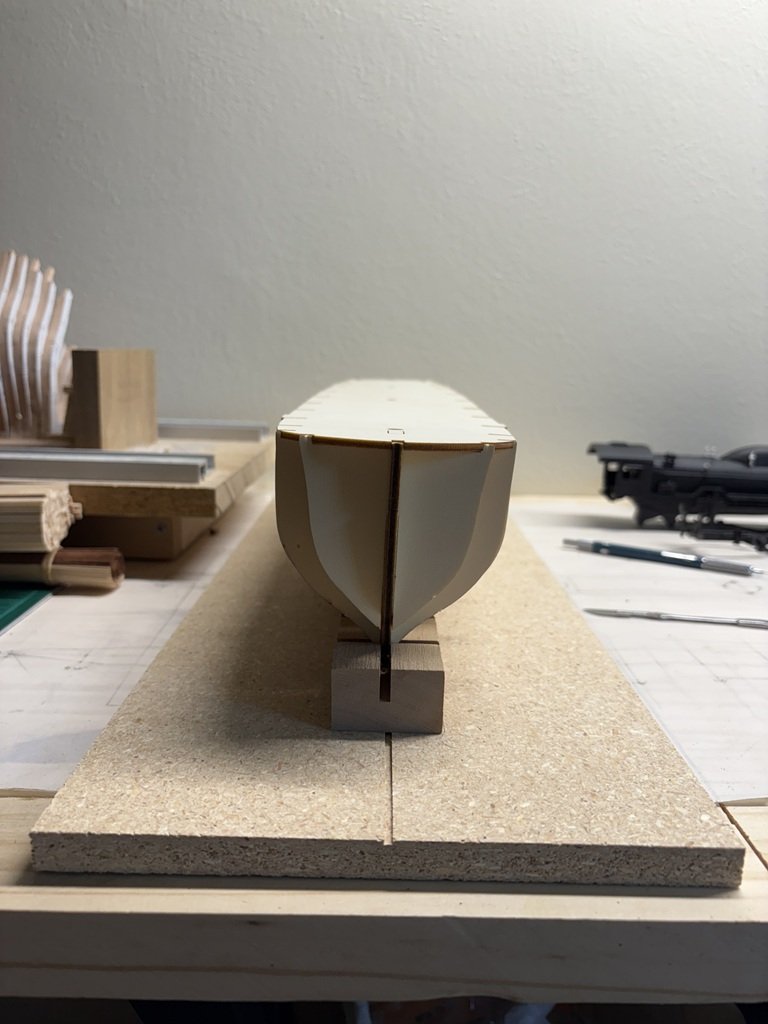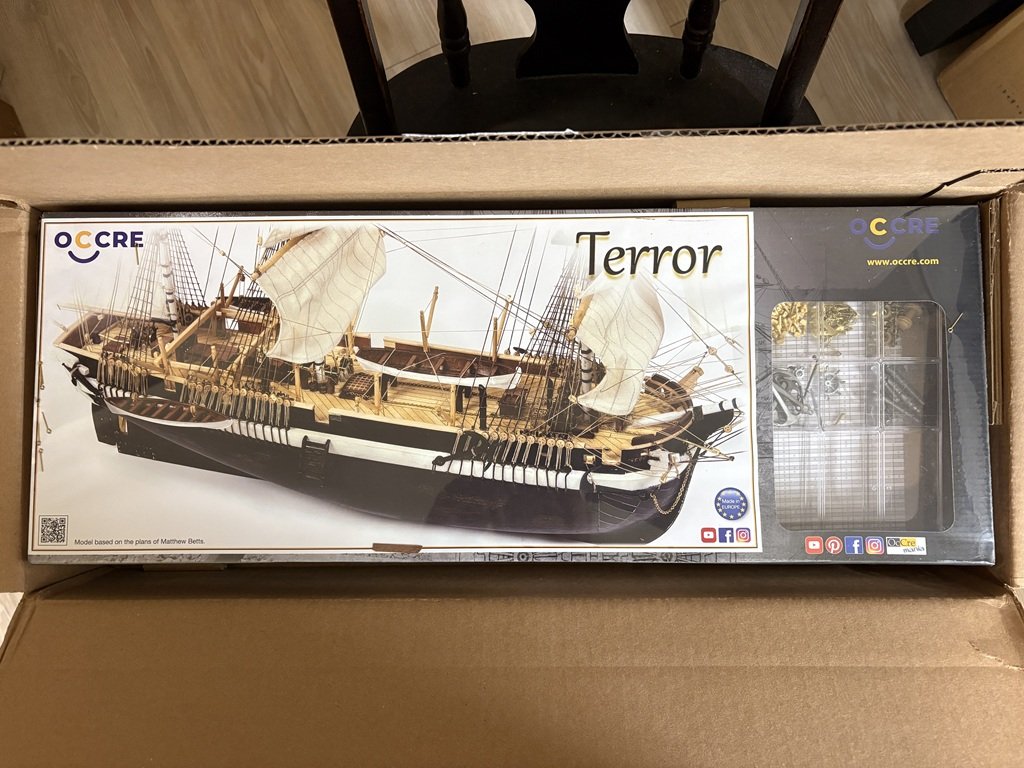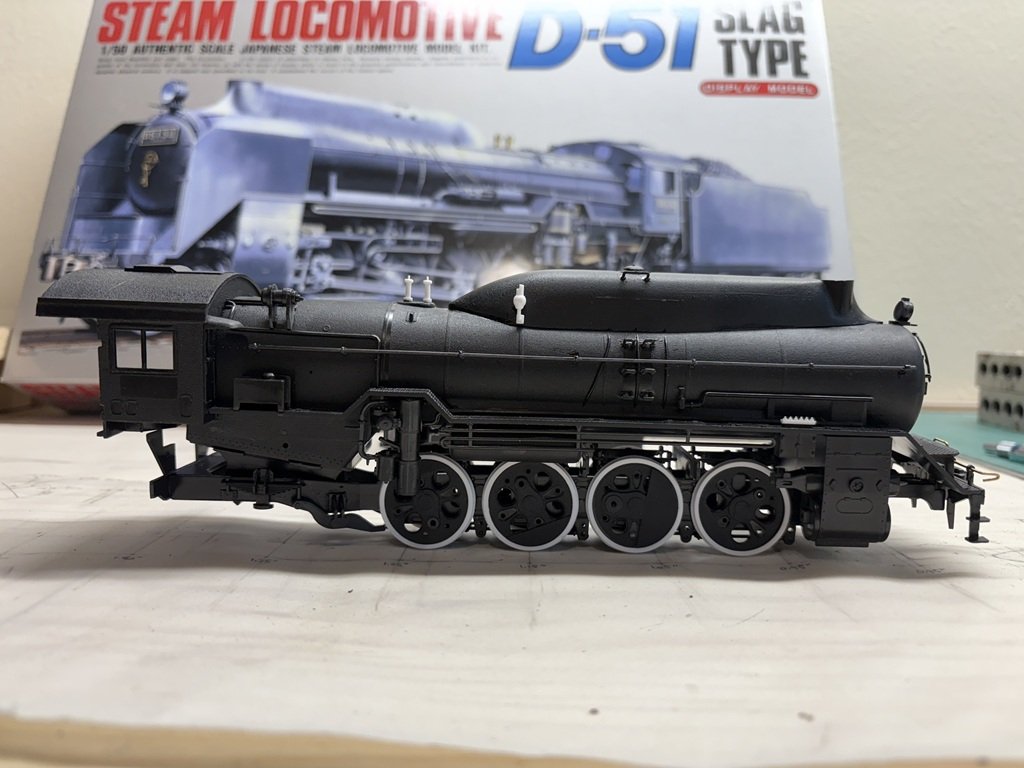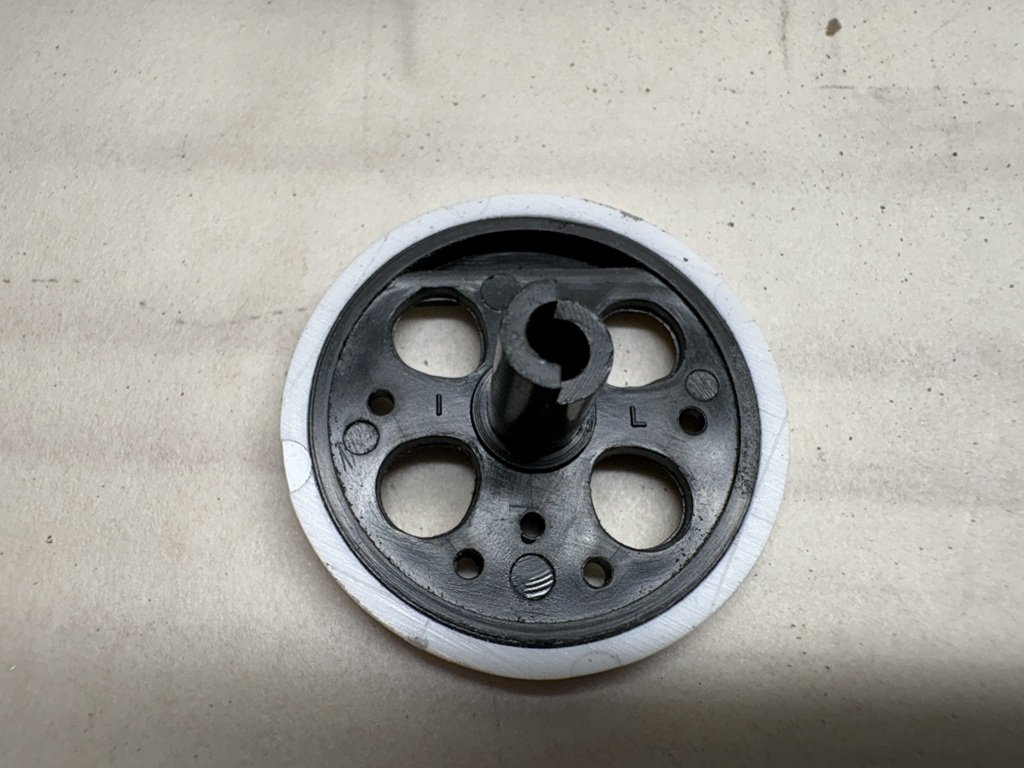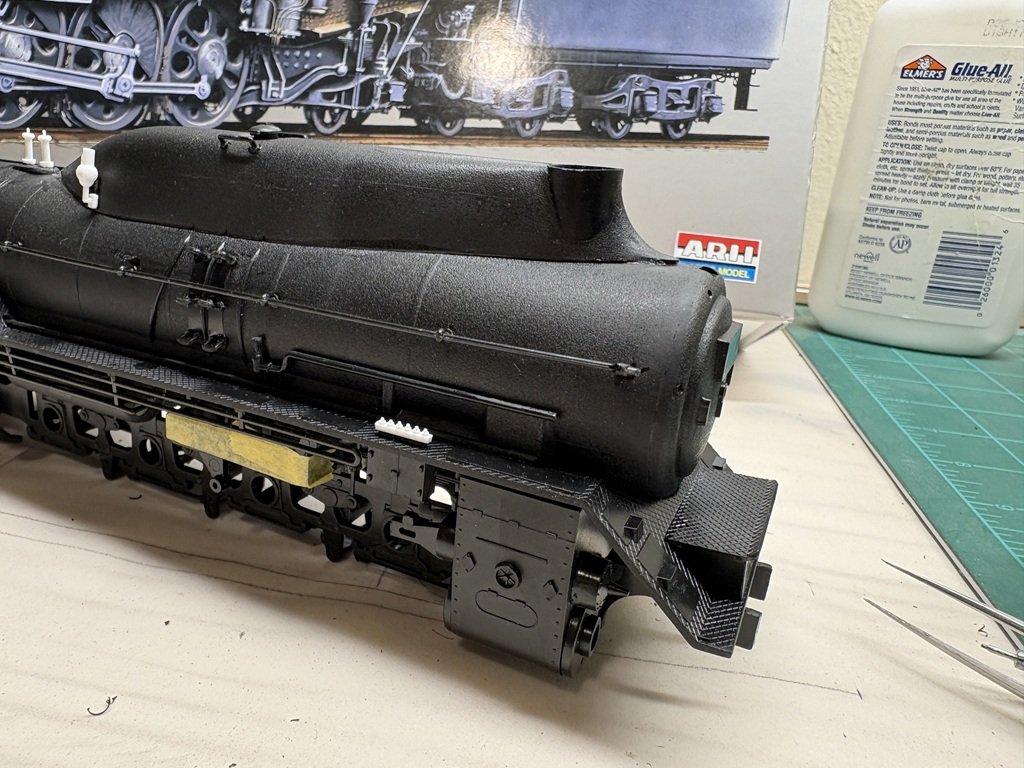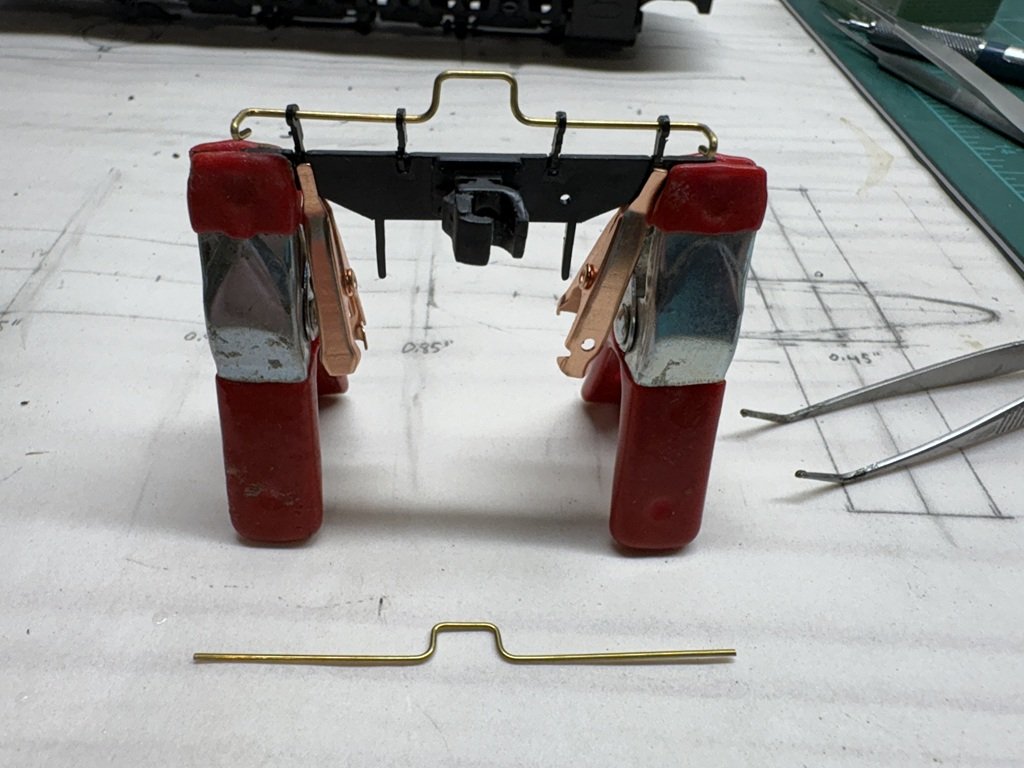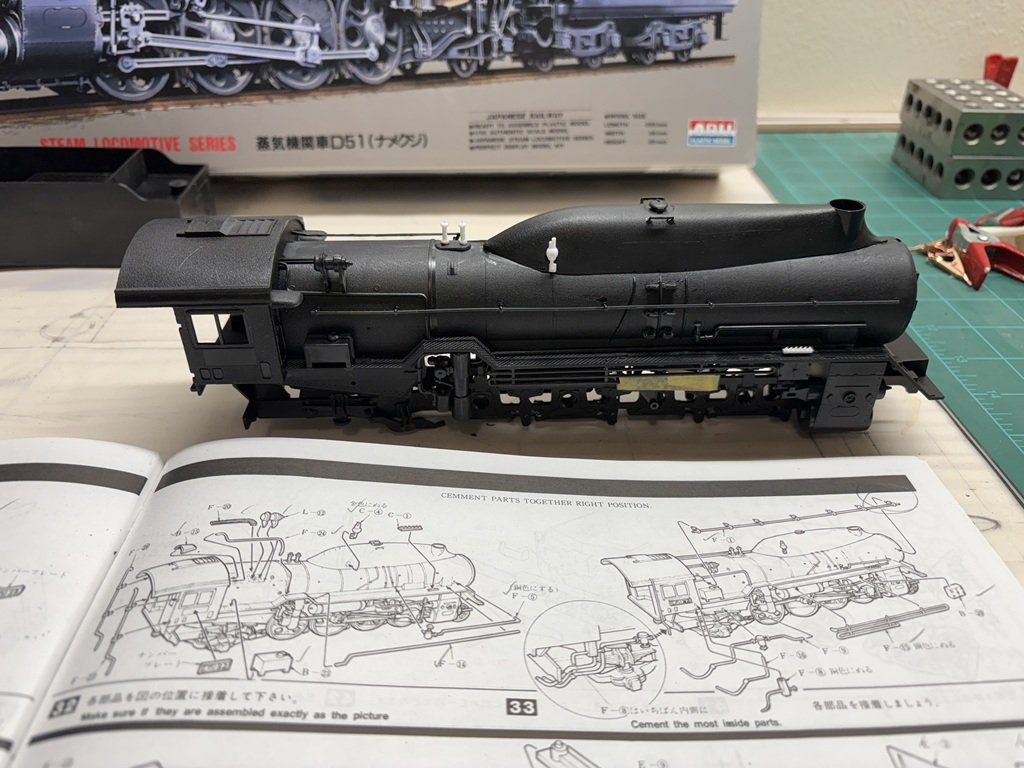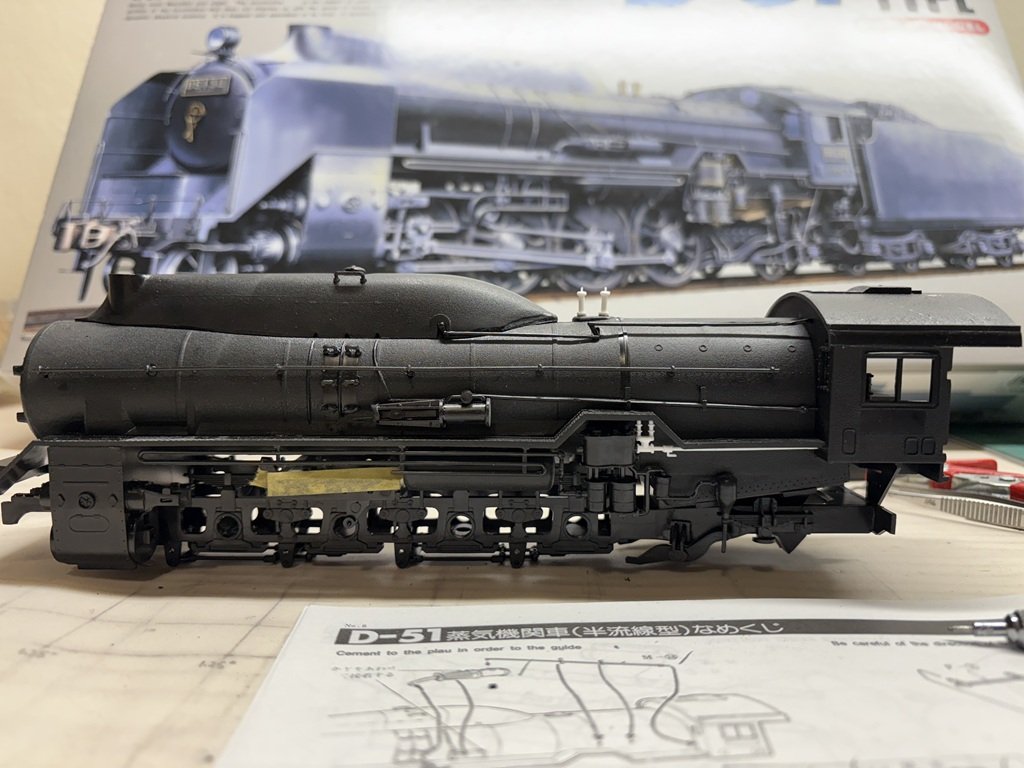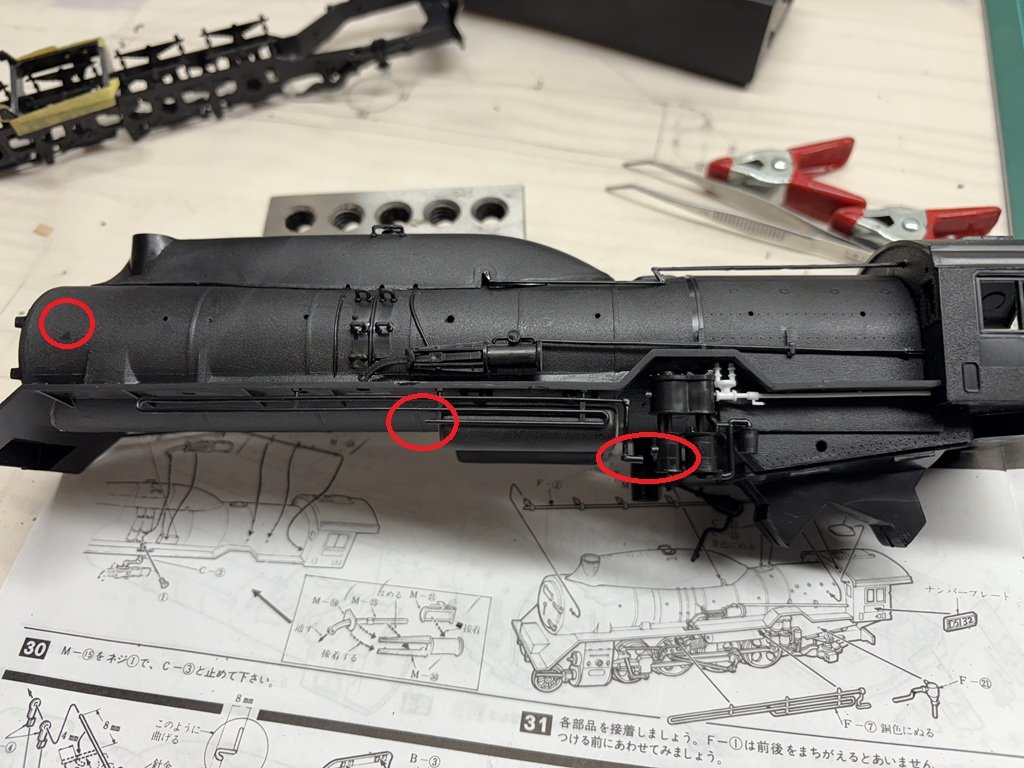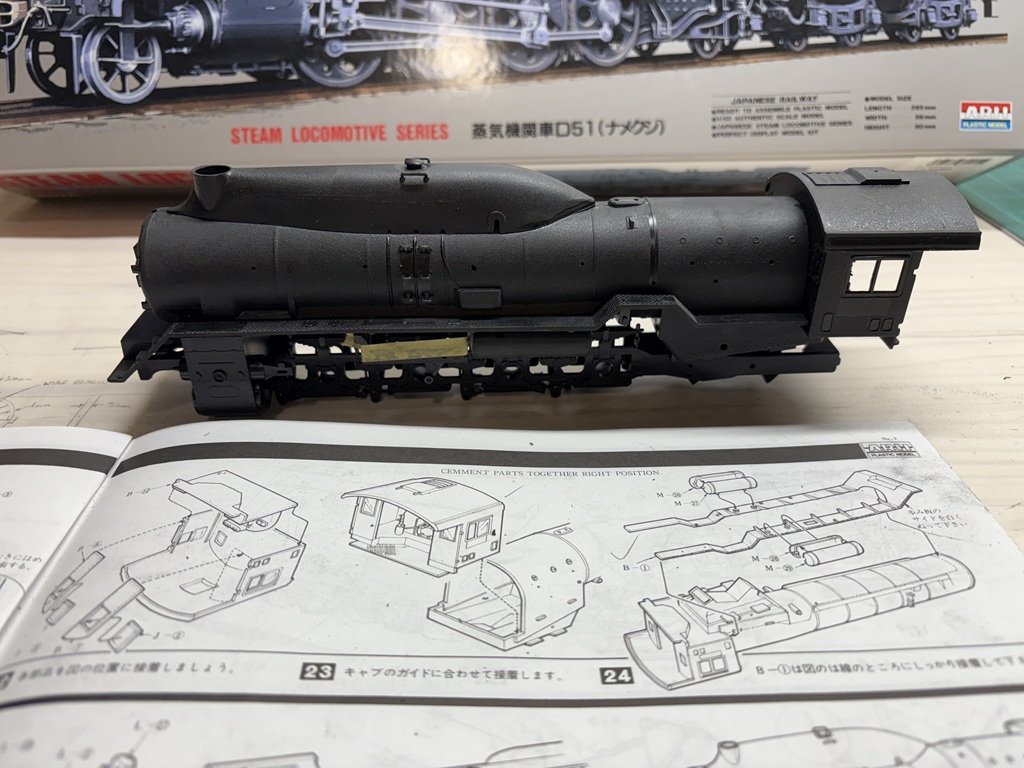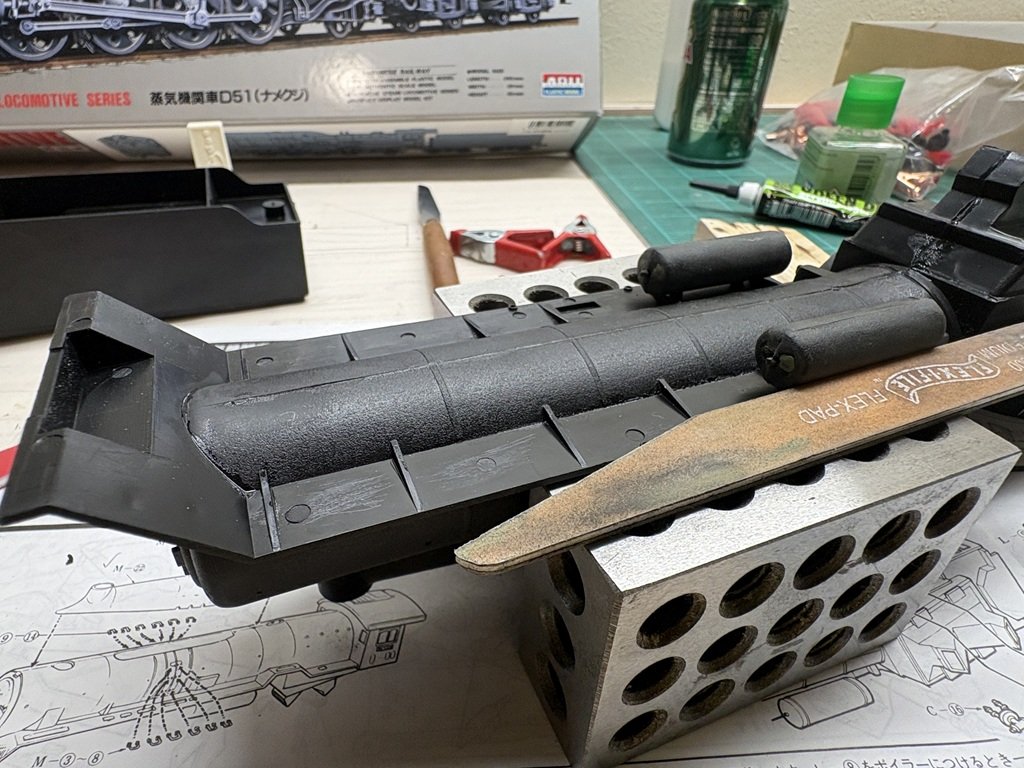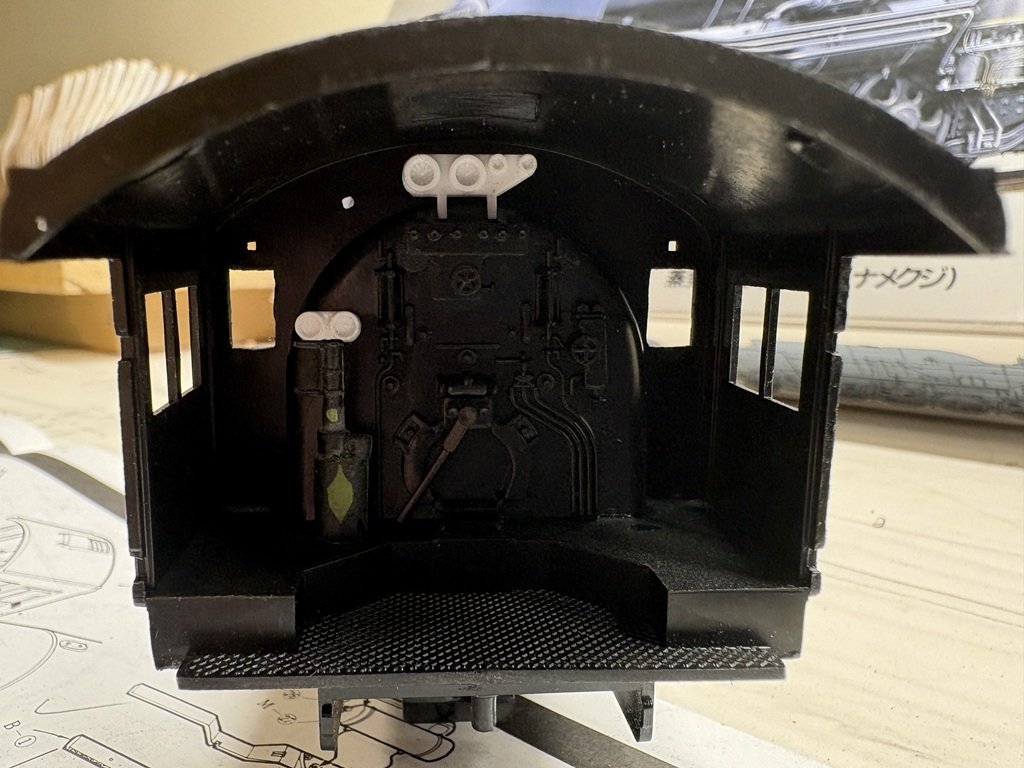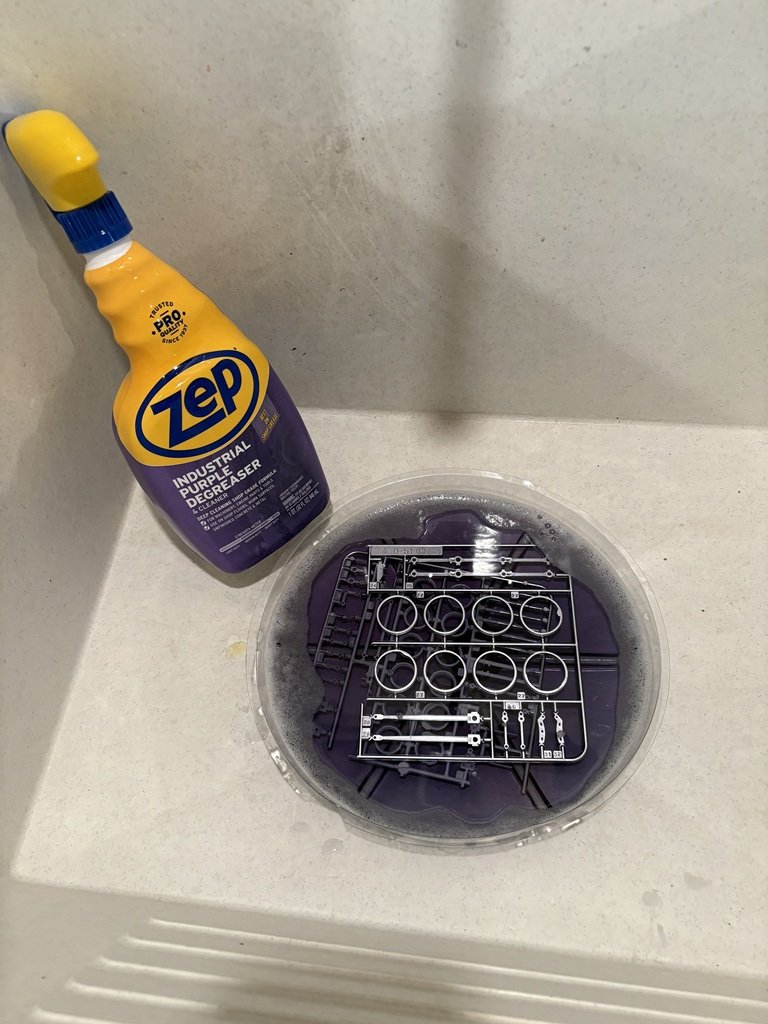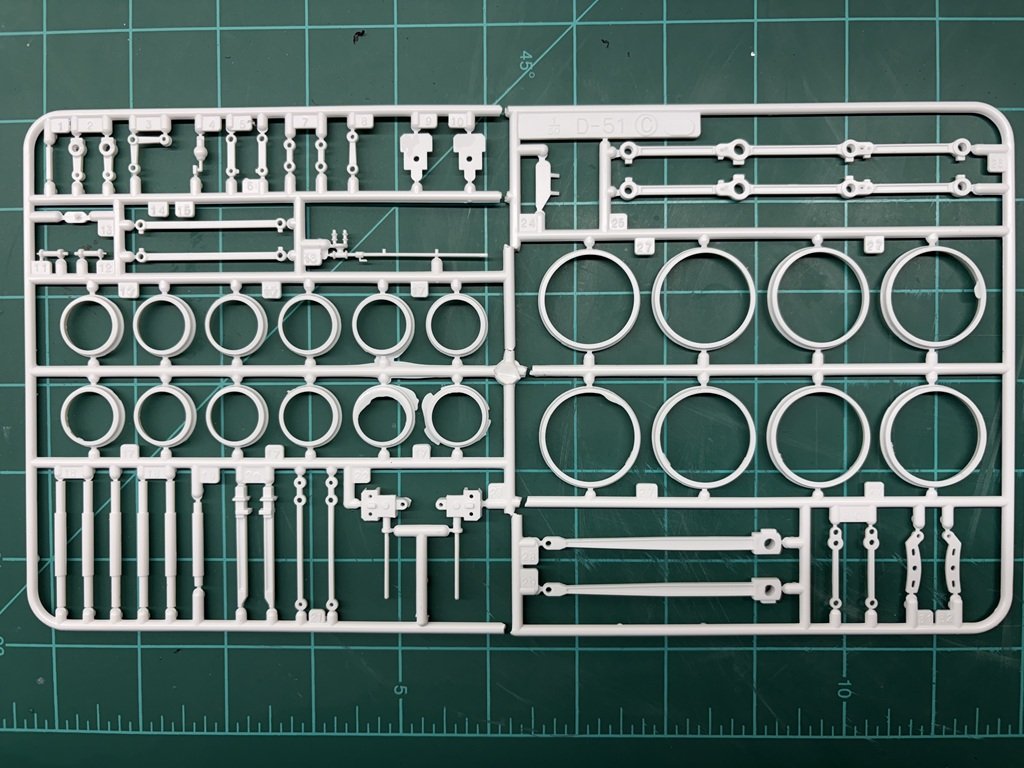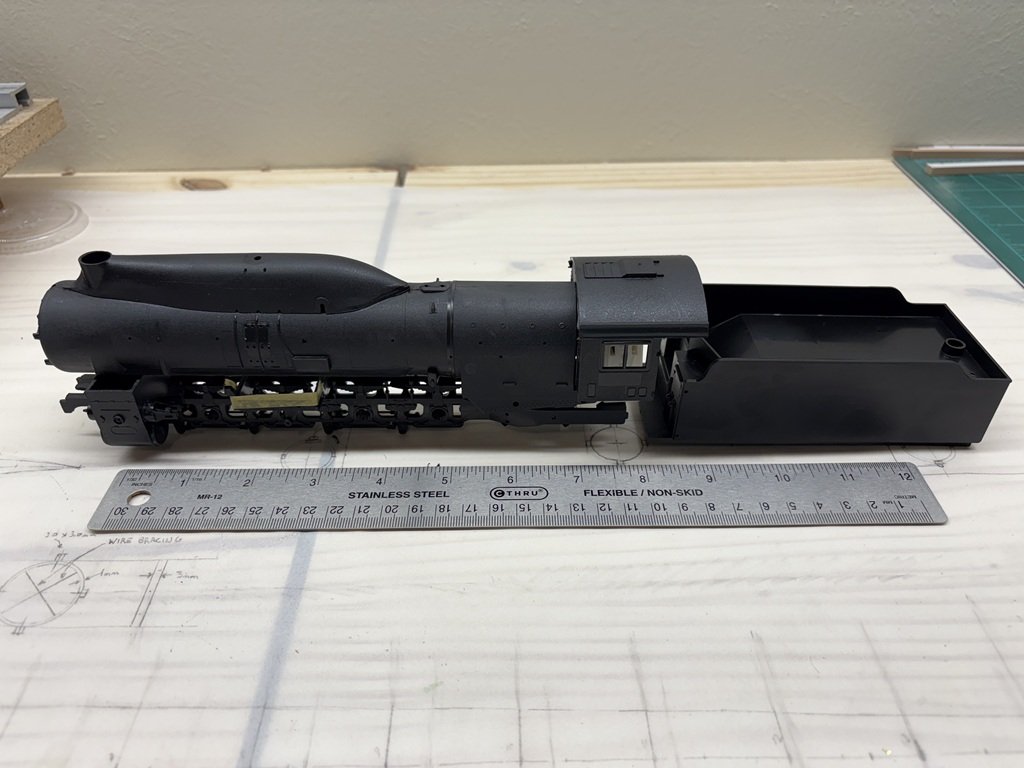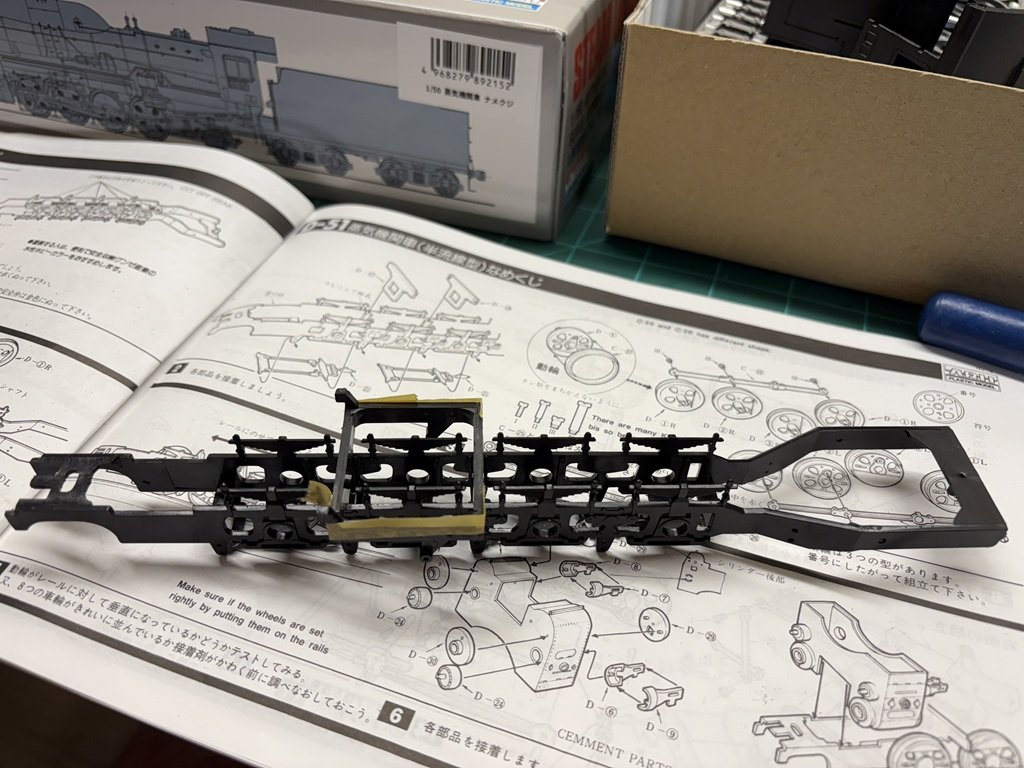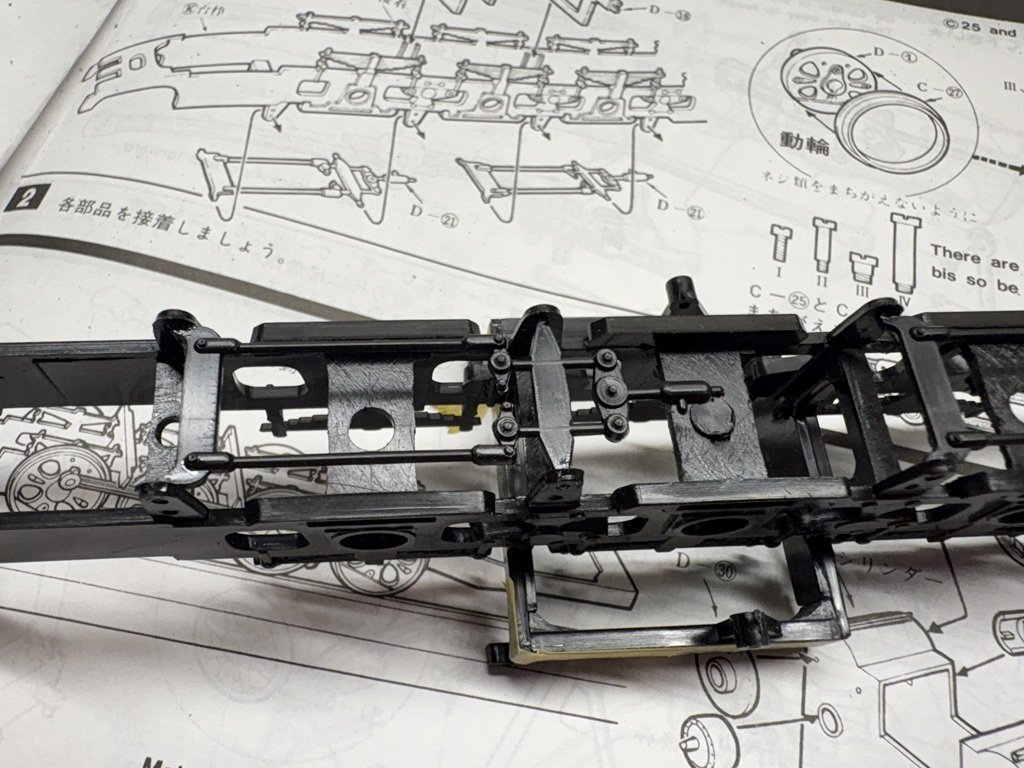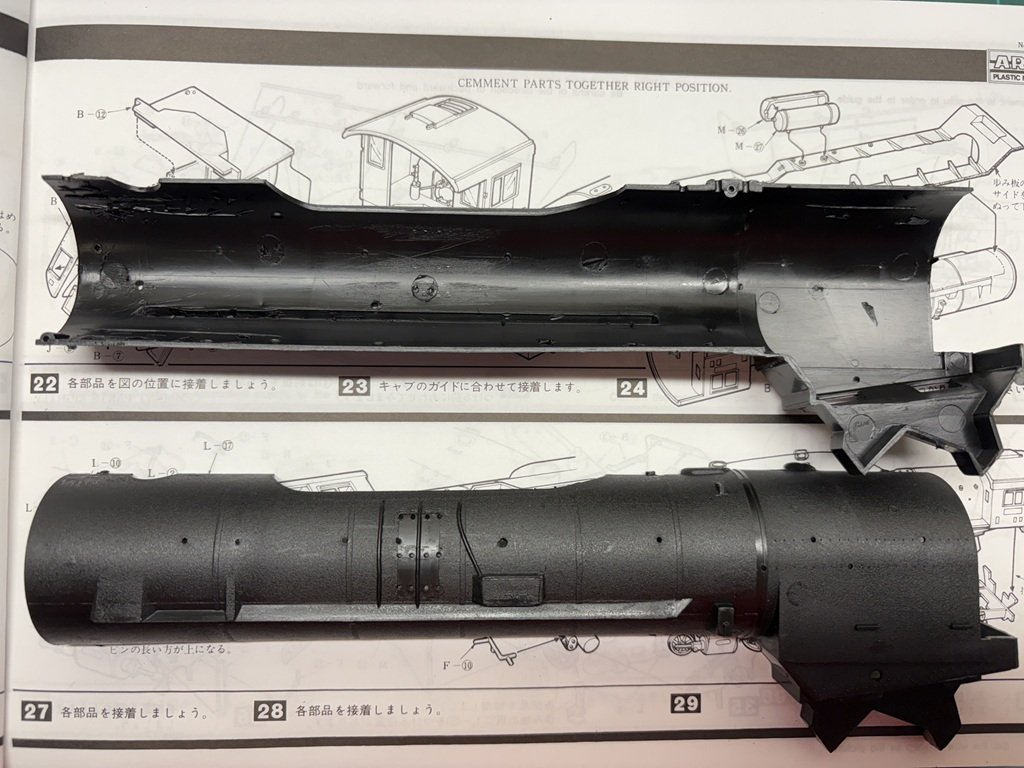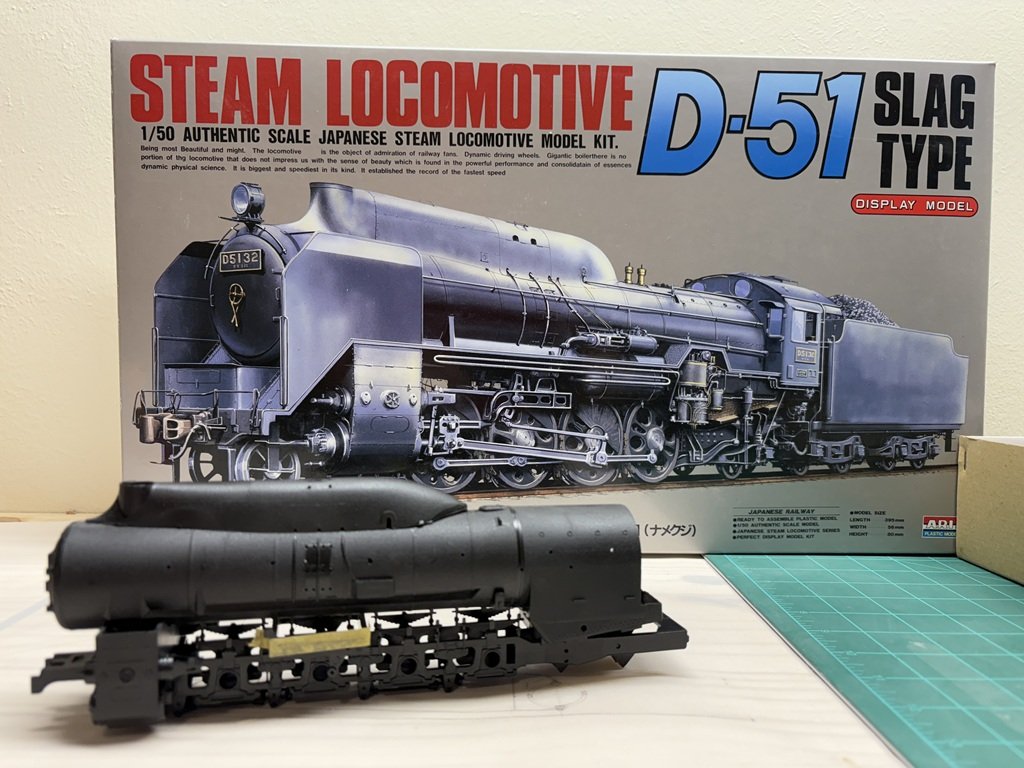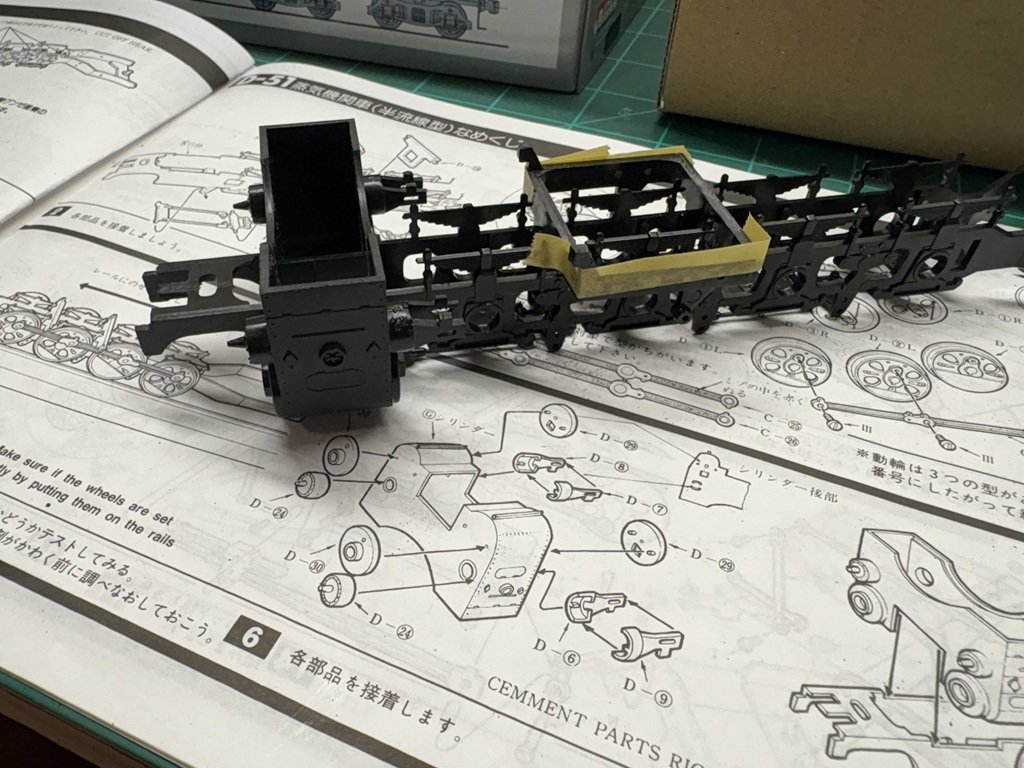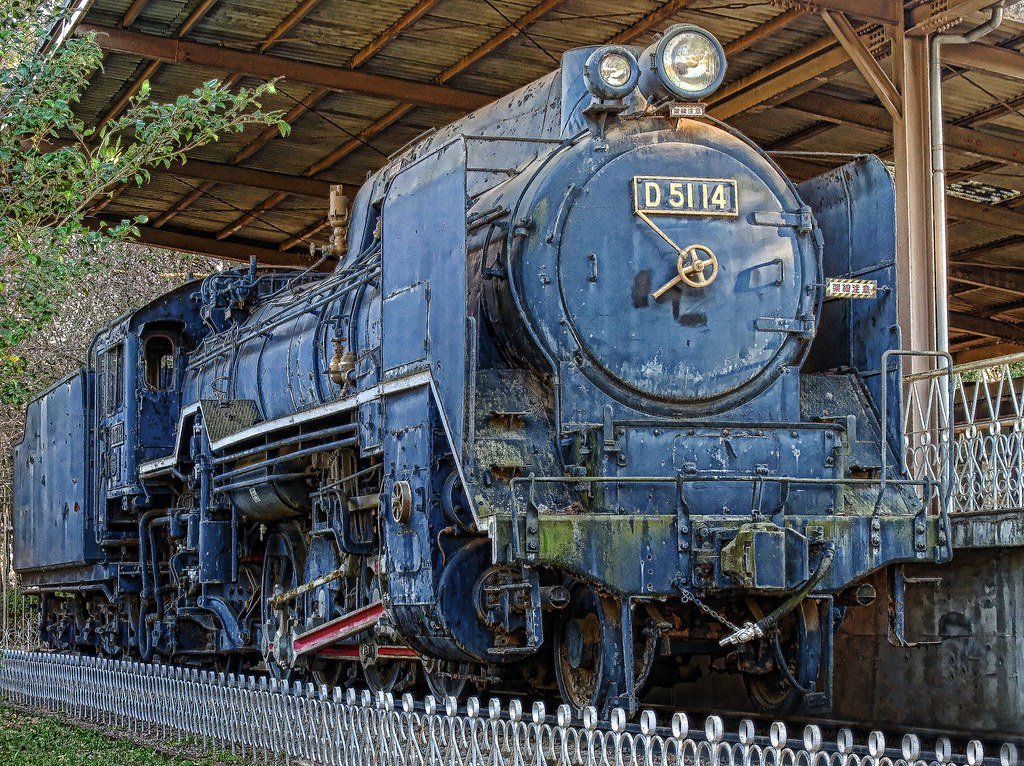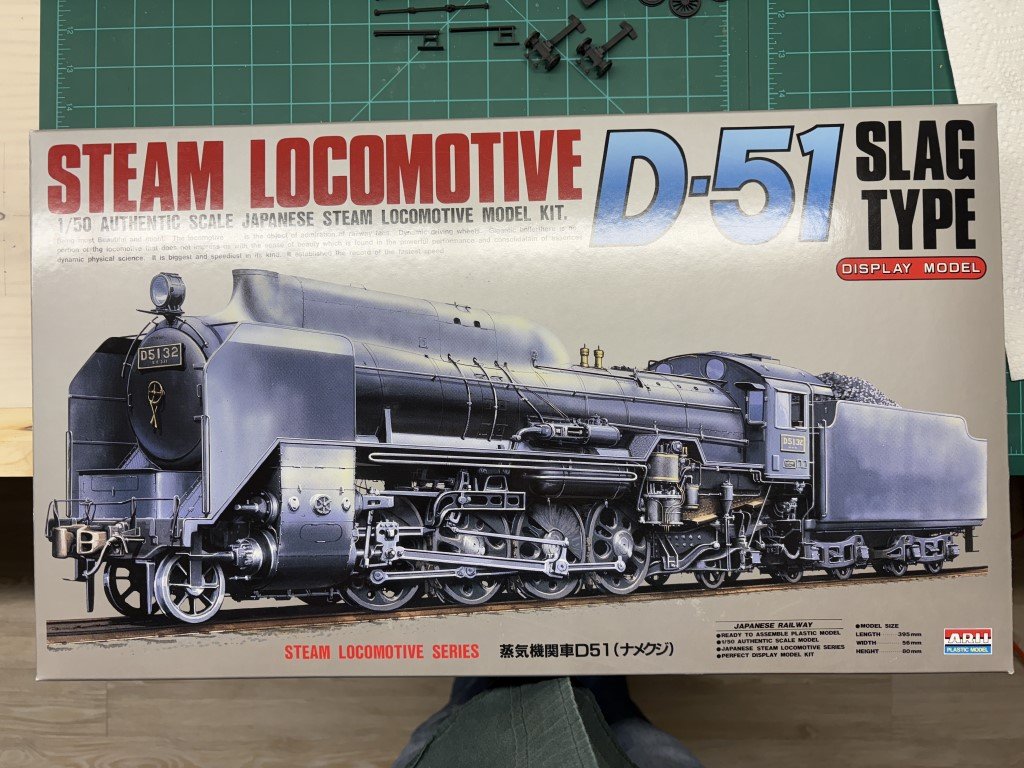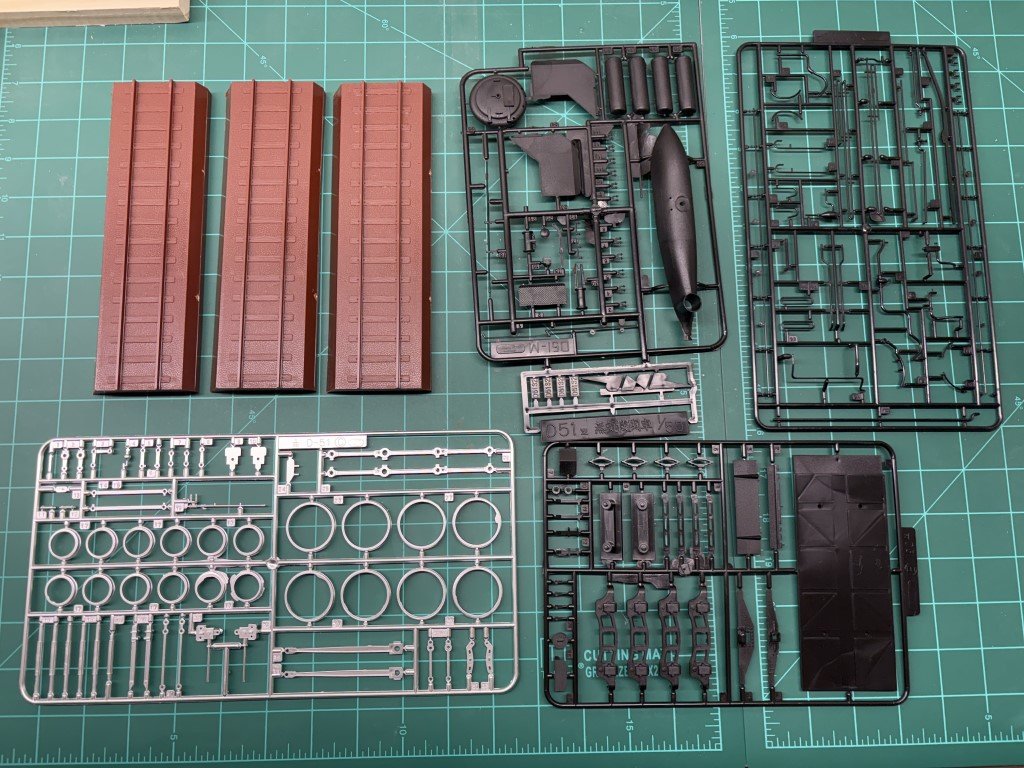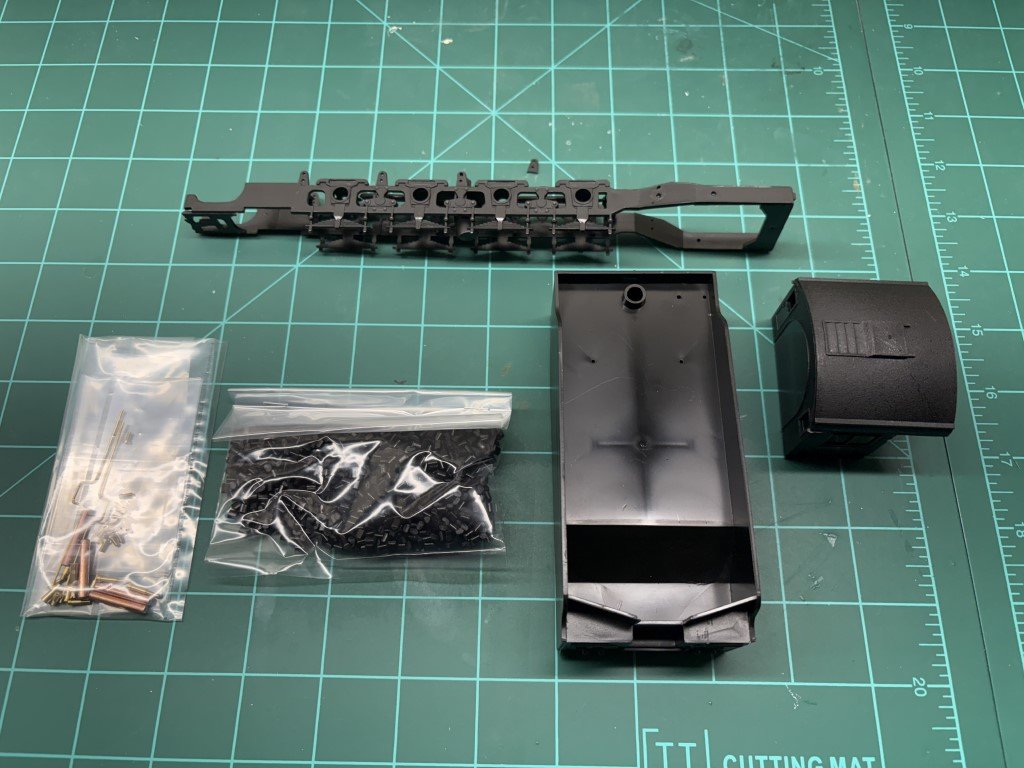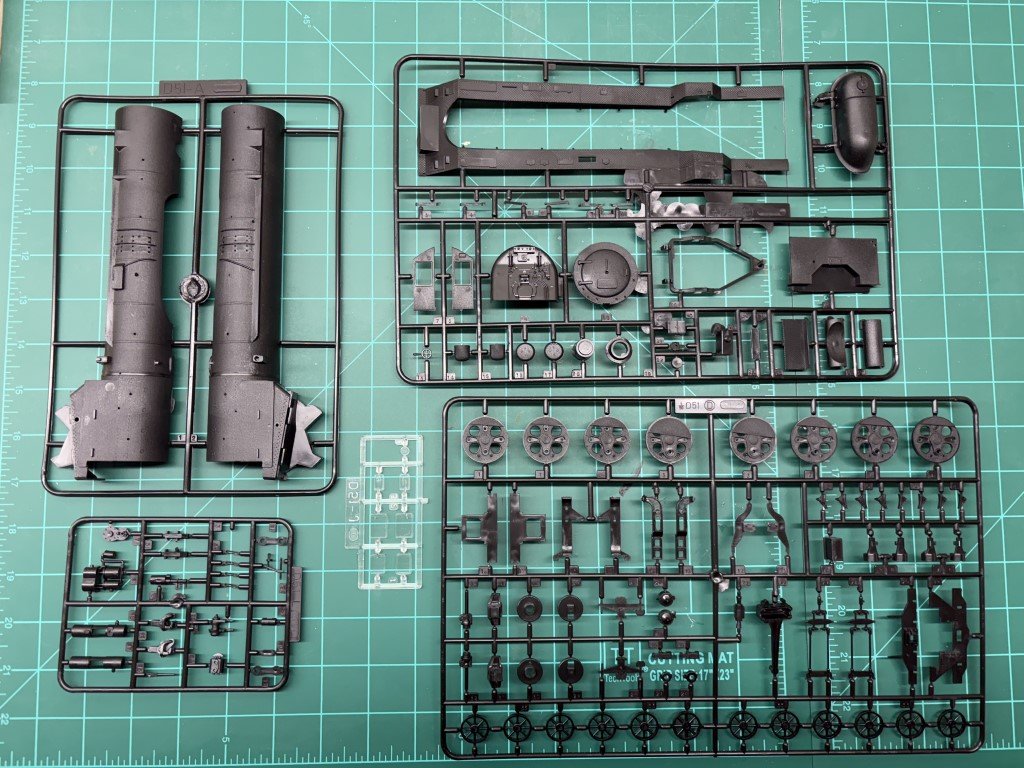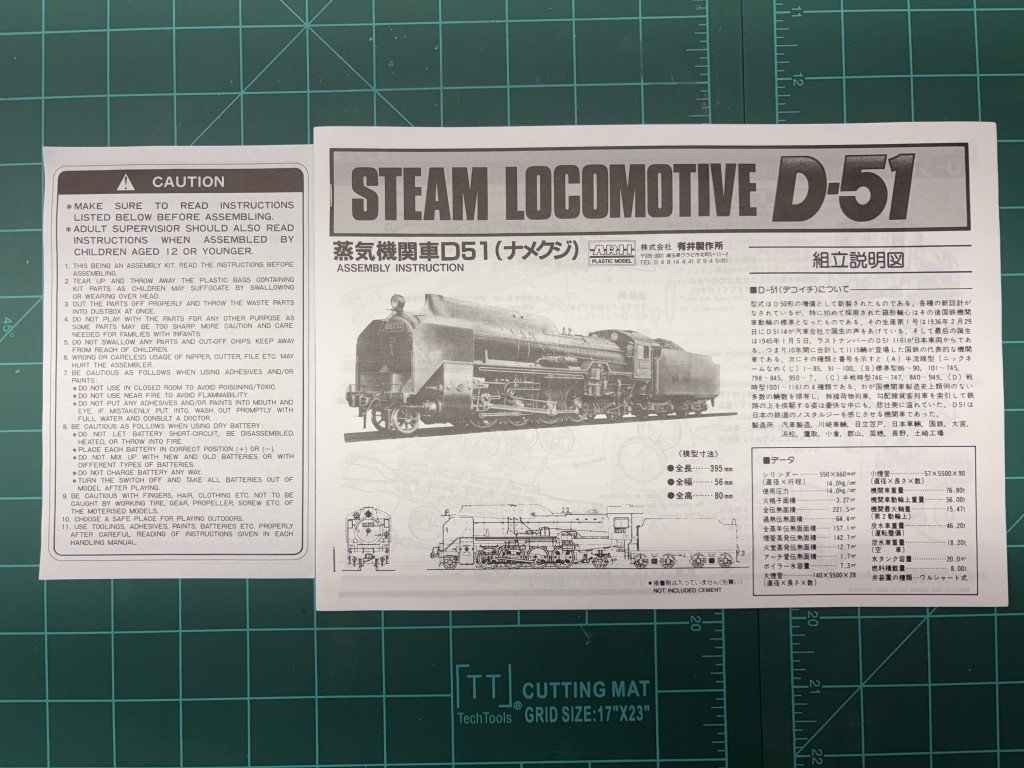-
Posts
804 -
Joined
-
Last visited
Content Type
Profiles
Forums
Gallery
Events
Everything posted by Greg Davis
-
I finished attaching filler blocks in these 7 spaces and permanently attached the final 3 bulkheads using the false deck to help with alignment. At this point I decided to detach the false deck (again) and begin the shaping process of the filler already in place. Once this is in pretty good shape I will add filler to the remaining bulkhead spaces and blend them in with this work. I started the shaping process with a Dremel tool using one of their carbide sanding disks. This work went pretty fast, but did result in a lot of dust that require sweeping and vacuuming! While not my favorite place to do this kind of work, it was done indoors since the temperatures were close to 90 today. That got me to here: Currently the hull is sitting in the hull jig and is getting a next level of shaping / smoothing with a rasp: I plan on smoothing close to the shape given by the kit's bulkheads and then will make refinements with the aid of the body plan in Betts' book. As pointed out by other builders of this kit, there are some extreme changes in the hull shape as you move away from midship near the turn of the bilge.
-
Another layer of filler blocks in place. These are thicker than the diagonal pieces - close to an inch. I did cut some excess off each piece with a bandsaw before attaching the blocks. Still a lot of wood to be removed because I did not bevel the cuts at all. Much more efficient than filling with the plywood strips - hopefully the basswood and bulkheads will have similar sanding attributes.
-
Pulled the false keel / bulkhead structure off the jig and found that the subdeck fit nicely over all the bulkhead extensions and was true! Sitting as it is I fine it interesting how far out the middle two bulkheads extend in comparison to the ones before and after. Some work will be needed to get the hull closer to the lines that Betts presents in his book. I plan on turning this back over now and to then fill the lower spaces defined by the seven bulkheads that are in place. Then I will add in the three missing bulkheads, secure the subdeck, etc. I'm hoping to get the filling / sanding / under-planking / sanding / ice-bumpers / sanding down before the weather turns bad this fall. I prefer to do the big sanding task outdoors!
-
Everything was still pretty square today, but I could still sense flexibility in the bulkheads that I wanted to get some control of. I decided on matched sets of diagonal spacers / filler pieces. I couldn't find material laying around to do the job, so off to the lumber store to by less than $9.00 of basswood: Yep over 6 feet of 8 inch wide and 7/8" thick basswood. Wood savings can be had if you have tools to cut it up! A little bit of time with table and band saws left me with 2.5" sheets of just under 1/2" material that I cut to final widths on my Byrnes saw. So between each pair of bulkheads is a piece of basswood having the same width that equals the spacing coming off the false keel: This has really tightened up the system and will make the filling process quicker and more precise.
-
Found a better way to use the keel holder. I inverted the false keel / bulkheads in the jig. I then 'packed' the space evenly between each bulkhead and the jig. Now each bulkhead from 2 to 11 is square to the false keel in all three dimensions - not just the two as before - and the twist is removed from all the bulkheads! Bulkheads 12 and 13 are not added now because I had not made slots for them when I envisioned having the hull right-side up. The false deck should be quite flat / stable along the greater part of the hull and then will be able to align the last two bulkheads. I'll do another check on the alignment and then start attaching the bulkheads permanently. I expect that I can add a good portion of the between bulkhead filler while it is stabilized upside down in the jig.
-
I've more or less sorted all the parts from the kit and placed them into different containers until needed. I've noticed a couple of differences between the two kits I've obtained. The new kit came with sails (the first did not) and this one has slightly different steering wheels. I like the new ones better; unfortunately one was damaged as it bounced around the box. The fit of the bulkheads in the false keel is a bit looser than the original kit. The false keel and false deck have a small amount of warpage, but I'm attuned to the issue and will work it out. To help me keep everything lined up / straight I've begun to build a keel holder for the model. Here's the false deck being fitted along with the bulkheads - nothing glued to this point. I see a little twist currently that needs to be fixed, but nothing like I did in try #1.
-
This is the 4th Occre kit I've purchased - everytime I've experienced the broken parts box; but this one was the worse. The exterior boxing for shipment was nicely done, but it seems any pressure on the parts box results in cracks / loose parts. I know there is at least one block that jumped onto the floor; maybe I'll find it someday!
-
A new box has been received and the crew is being called back! Very glad Occre shrink wraps their kits as the plastic box of fittings didn't hold up in transit. Looks like a good proportion of the fittings have escaped into the box via a large hole in the lower left of the plastic box. This will be a 'fun' search and recovery given the way their cardboard boxes are made.
-
A few more additions to the boiler - rails on the front, steps up front, headlight, ... . Also cleaned up the wheels and tires and did a test fit to see the locomotive 'off the ground'. Two things of note here. First, the instructions have the builder attaching the wheels / tires to the chassis before the cylinder assembly is added. I have already added this assembly because I wanted to paint it with the chassis as a complete unit - almost a very bad idea! Its hard to see in the above picture, but there are pieces that extend to the back of the cylinders and are part of the running gear. Turns out that with that in place, there is not enough space to slide in the first wheel / tire as one. Fortunately, if the tire is removed, the wheel just makes it into place and then the tire can follow! Second thing of note is an unexpected aid in how the wheels have been molded. There are three types of wheels for each side; the instructions label them as 1L (2), 2L, and 3L (similar for the right). While you can tell the difference by carefully looking at the counterweights, the model creator's molded the designations into the back of each wheel - a very nice touch. Generally, I like the look of the drivers on all locomotives, but even more so the spokeless drivers like those on this machine. It continues to amaze me how precise the wheels and tires needed to be machined so that the tires could be heated and slipped onto the wheels prior to cooling.
-
Today I learned that the rail gauge for this locomotive (common in Japan) is Cape Gauge 3' 6". Wider than U.S. narrow gauge of 3', but not as wide as our standard gauge of 4' 8.5". I did a little 'research' since the included display track just didn't look much like O - gauge track as I was expecting since the model is 1/50th scale and thus close to the 1/48th scale.
-
I fixed / added to the boiler rail by modifying an un-needed kit part. It seems that the base kit is for a later D-51 and the D-51 Slug makes use of common parts plus those needed to change the boiler appearance. So I was able to take a boiler linkage that had the same diameter as the rail and do some cutting and filing to get something that worked. I also did some further work on the front of the boiler unit; the strangest being a railing (?) above the front coupler - for some reason, this is made from a piece of brass wire unlike all the other railing. There is an identical part for the tender that needs to be made. They came partially shaped. Getting the four plastic stations lined up is proving to be dicey process. I actually would have appreciated the unit (wire and stations) to have been molded as a single piece (which would be consistent with the rest of the kit).
-
Most of the fireman's side details were added today. This is work from steps 32 and 33 in the instruction booklet. There are a number of parts that fit below the cab on this side - mostly associated with future connections to the tender - that have not been added currently. These three pieces wrap around / under the chassis and will be added once the boiler and chassis have been attached to one another. As with the engineer's side, several parts needed work to fit as needed. The biggest issue on this side is the long boiler rail; it was not complete at the fore end - the last station and bit of rail will need to be (re)modeled and added. Fortunately the problem is at an end and even better that it will be mostly hidden behind a fairing!
-
The last couple of days I've been adding the exterior detail parts to the boiler. I am mostly done with one side of the boiler now, but it has been a challenge with several pieces not fitting as expected. Here's where the engineer's side currently looks like: A couple of the issue I have run into (there are more) include, from left to right, no front hole for the walkway rail - easily corrected; tubing missing 90 degree bend / extension to meet front end of under walkway tank - still to be fixed; gap / misalignment of connection - has been fixed. The connection fix involved shortening the downward section and then lengthening the horizontal section. Several other parts also needed to be modified a bit to achieve a reasonable fit. This side of the boiler won't change much prior to priming and painting.
-
Yesterday and today I added rungs mid-boiler. This is a place that a more dedicated modeler could make quite and improvement as these pieces seem to be a bit 'heavy' and protrude outward more than expected. I did some checking online and there does not seem to be any photo-etch upgrade packages made for the Arii locomotive kits; so any upgrades would need to be of the scratch nature. The boiler walkways were actually added before the rungs. This is one piece and it had a pretty good warp to it. Fortunately the plastic is flexible and there is a boiler length ridge / protrusion that this piece attaches to. So I started gluing by the cab and inch by inch one side to the other I made my way to the front. In the above picture, you can see a tank under the walk. There is one on each side and each had depressions that needed to be filled and smoothed - I used Green Putty for the job. The tanks have two very small diameter / short locator pins. They do not keep the piece in place very well, so I needed to keep the tanks propped in position as the cement took hold. Actually, before all this took place I did some work on the cab and joined the assembly to the boiler: A little more Green Putty! So that's it for now.
-
Today's progress was mostly in the removal of the chrome on one of the sprues. I cut the sprue into two parts and bathed them in an industrial purple degreaser - the one called Zep is available where I live and worked well. It took just under 30 minutes to remove the chrome plating and revealing a nice clean white set of parts. I also started to assemble some parts on the tender (but it is hard to see anything has been added) and attached the smoke stack / boiler fairing. Then I set the tender next to the boiler / cab to get a feel for the size of the final model. The box indicates the overall length to be 395mm; that does seem plausible.
-
Its a little difficult for me to interpret Scalemates timeline on this kit. It seems that the kit was first produced by Otaki in 1969 and updated a couple of times, most recently in 1984 which is the last year or two that the model was marketed by Otaki. Arii took over in 1986 and changed the box a few time - this kit is from their 4th 'new box' released in the 90's. Now Micro Ace has the molds and a new box but still no kit updates since 1984. So yes, this is pretty old - there must have been quite a few stowed away that these are still be sold on Amazon and the box / kit looks like it just came from the manufacture. I do wish that there were more static steam locomotive kits available, but given the limited choices I am glad these Arii kits can still be obtained. Once this model is done, two more of their kits, the C53 and the C62, are on a shelf ready to be built.
-
Today I started assembling the kit. The plastic feels less rigid than I have felt in other model kits. There is a bit more flash on the parts than the Hobby Boss BR86 kits had, but nothing that is overwhelming so far. I started with the chassis as directed by the instruction booklet. Clean up took the most time as it is mostly in one-piece with a few details / parts to be added - two bulkheads and part of the brake system. Here is the assembly from above and below: The cylinder assembly was put together and attached to the chassis next. It would have been nice if the structures D 6 & 9 and D 7 & 8 had alignment pins between one another, but they didn't and you need to pair them by sight / feel although they are indexed to the cylinder body. Since that didn't take much time, I jumped ahead to start on the boiler. The two halves looked fine to me after I cleaned up the flash. The challenge for me was getting these together with just 2 alignment pins! Fortunately the two halves mate well in terms of details such as the bands encircling the boiler. I ended up using the smoke box door as an aid to putting these parts together along with several clamps and some tape. [Aside, the kit came with two different steam box doors - I wonder if some parts of this kit are used in another.] Below is what the boiler looks like sitting on the chassis and having the cover sitting on top of the boiler. The cover still has some flash, but I can see that it will mate nicely with the boiler (which I think is impressive). Already thinking about a possible color scheme. In service, most were black; however, a few were painted more brightly. Today, I like this scheme (less the blue tires): This particular locomotive has been repainted and is currently black.
-
Around the new year I had gotten the bug to build a couple of plastic BR 86 German locomotives. While making them, I searched for other static locomotive kits and came across several 1/50 scale kits of Japanese steam locomotives made by the company Arii (which was apparently taken over by Micro Ace). I now have three of the kits. I chose to start with the D-51 kit first. D51's were produced starting in the 30's and were made in several variants. This kit represents the early model of the D51 and is identifiable by the long covering that extends from the sand box to the chimney - 95 of this type were made. Later models had shorter covers to facilitate maintenance of the locomotives. Due to the appearance of the long covering, the early D51's were given the nickname 'Namekuji' or Slug. Based on what I have read online, I believe the kit labeling / translation of D-51 Slag Type may be a typo. Here is what the kit looks like / includes:
-
After an inspection, the local master shipwright is at high risk of losing his job. Currently he is equal parts mad, sad, and embarrassed. After reasonable preparation, apparently work proceeded without further quality control and this has resulted in a great loss and setback to the shipyard. While the underside seemed OK (but looked a bit like a cargo ship): Upper views exposed an issue: Was it the camera angle? Nope, carelessness was victorious - the structure had a Terror-ible twist. Further inspection noted that the structure was solid as a rock and had no chance of disassembly. Unceremoniously the hull has been scuttled. In the mist of the dilemma, the governing board considered options going forward: quit the project (not acceptable); use the plans from Betts' text / scratch build the ship (more work than desired at this time); order replacement - ding, ding the winner. So now the Terror building ways stay empty until new materials arrive and the crew can start again. Hopefully it will not be too long before they are back to work.
-
Looking really nice - can't wait to see the rigging commence! I find it interesting to see the differences between your build and the one I did with the Constructo kit
- 22 replies
-
- Pourquois Pas
- Heller
-
(and 1 more)
Tagged with:
-
Keith - Thanks for looking in and I hope that you can continue to do so periodically! I have read your Terror log more times than I'd like to admit - a wonderful build and a superb information resource . Because of you and others, I feel that I will have lighter seas to navigate with this project. I feel that turning this into a solid hull is my best chance for getting a better feel for the hull's shape prior to planking - but we shall see if this is indeed a help or just a lot of sawdust. All the best, Greg
-
Starting to fill space between bulkheads: Even though this is a double planked model I like the idea of filling space between the bulkheads. I find that I can do a better job fairing the hull if it is 'solid' as opposed to making a judgement from several bulkheads. From my experiences, using filler wood that is similar in hardness and sanding attributes to the bulkheads is advantageous. For example, I once used balsa as a filler and it softer than the bulkheads so when sanded it was easy to make valleys between the bulkheads (which then needed filler, etc.). Here the bulkheads are a fairly soft plywood. While this wasn't planned; a couple of weeks ago I laid plywood underlayment for a new vinyl plank floor in our family room and it turns out that the 5mm plywood I had used is quite similar in hardness to the plywood in this OcCre kit. Hence an in-house supply was readily available for this task. I ripped a bunch of 3/4" wide material and then am cutting it to fit between consecutive bulkheads. Of course the bulkheads are not spaced evenly, so it is best to cut for one space at a time. In each space material is stacked up starting at the subdeck and another stack comes off the false keel. When the two stacks start to overlap one stack is left and the other continues to be built up until the desired space is filled.
-
Today I took the deck back off and sanded the correct bevels onto the top of the bulkheads so that the subdeck would fit nicely. A flexible sanding stick works well for this process. When doing this work, I keep on reminding myself that the process needs to be carried out completely across the top of bulkhead; i.e., not just along the junction of the bulkheads and the false keel in order to preserve the deck camber. The fit of the subdeck was checked and when satisfied, I clamped the subdeck to the false keel / bulkhead structure and then brushed a reasonable amount of glue into all of the joints. This is out of order from the instructions. The instructions suggest planking the deck and then installing the subdeck / deck structure. I chose to attach the subdeck now when it was more flexible and could be used for the bulkhead alignment process. Additionally, if it were the case that any of the bulkhead extensions passed above the subdeck, they could be sanded down prior to the deck installation. While it cannot be seen in this picture, I did mark the centerline of the deck before attaching the subdeck. Additionally, I did consult Betts' text with respect to the upper deck plan to determine the correct width for the center / straight deck planking region. Measuring the plan midship, it appears that the ratio of straight and herring bone patterns is approximately 6:7:6. The width of the subdeck at this point is 4"; so on the model the center deck planking region should be close to 1.5" - this is the width of the section I have marked out. While I'll come back to this later in the build, the deck plan indicates 11 strakes of deck planks in the center section and the model's instructions show 6. As a straightforward modification, I will use 11 strakes of narrower planking here; similarly, I will be using (more) correctly scaled planking in the herring bone regions.
About us
Modelshipworld - Advancing Ship Modeling through Research
SSL Secured
Your security is important for us so this Website is SSL-Secured
NRG Mailing Address
Nautical Research Guild
237 South Lincoln Street
Westmont IL, 60559-1917
Model Ship World ® and the MSW logo are Registered Trademarks, and belong to the Nautical Research Guild (United States Patent and Trademark Office: No. 6,929,264 & No. 6,929,274, registered Dec. 20, 2022)
Helpful Links
About the NRG
If you enjoy building ship models that are historically accurate as well as beautiful, then The Nautical Research Guild (NRG) is just right for you.
The Guild is a non-profit educational organization whose mission is to “Advance Ship Modeling Through Research”. We provide support to our members in their efforts to raise the quality of their model ships.
The Nautical Research Guild has published our world-renowned quarterly magazine, The Nautical Research Journal, since 1955. The pages of the Journal are full of articles by accomplished ship modelers who show you how they create those exquisite details on their models, and by maritime historians who show you the correct details to build. The Journal is available in both print and digital editions. Go to the NRG web site (www.thenrg.org) to download a complimentary digital copy of the Journal. The NRG also publishes plan sets, books and compilations of back issues of the Journal and the former Ships in Scale and Model Ship Builder magazines.


